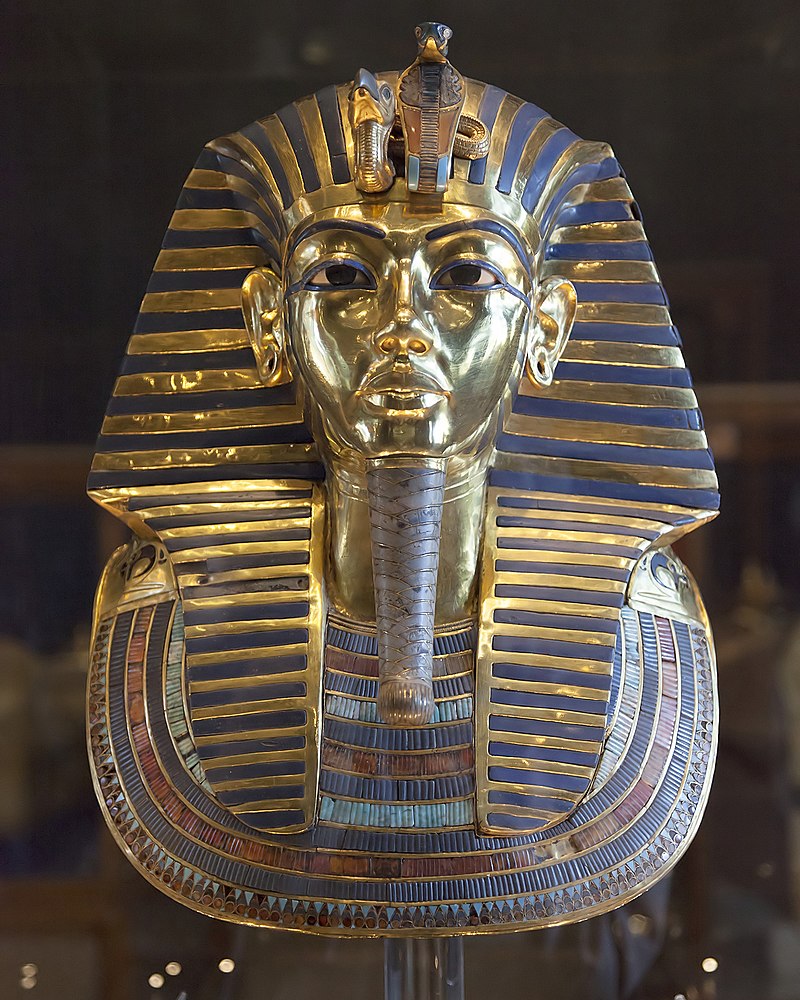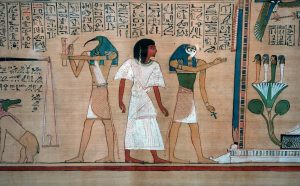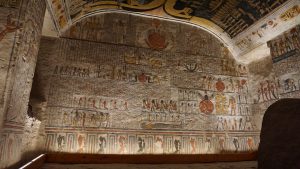9 Chapter 3.2: Art and the Afterlife
OBJECTS FOR THE AFTERLIFE
A high percentage of Egyptian art was created in the service of the afterlife. The Egyptians believed that a successful afterlife required living a good life on earth and proper preparation for the next in the form of objects that would aid them in the afterlife. The following videos describe the Egyptian concept of the afterlife and what the goods that it required.

Art and the Afterlife TASK 1:
In some respects, mummification, could, in its own right, be considered an art form. After watching the video, please respond to the accompanying questions.
Ancient Egyptian Burial Customs
https://www.youtube.com/watch?v=77Ooz4wivs0
Art and the Afterlife TASK 1 prompt:
Describe the significance of mummification for the Egyptian afterlife. What purpose did it serve?
What fact about mummification surprised you?
Art and the Afterlife TASK 2:
As the famous discovery of Tutankhamun’s tomb revealed, ancient Egyptians, especially pharaohs, were buried with unimaginable treasure. The objects in tombs, weren’t just valuable possessions, many of them served a specific function in the context of Egyptian belief in life eternal. The topics of the following videos explore tomb furnishings and decorative programs. After viewing the videos, please respond to the corresponding questions.
Death and Burial in Ancient Egypt – Hull Museums
Art and the Afterlife TASK 2 prompt:
Select three objects discussed in this video, explaining how each functioned for its owner in their afterlife.
Art and the Afterlife TASK 3:
Tomb of Nebamun (article)
Follow this link for the article. Tombs not only contained furnishings one would need for a successful afterlife, but they were also elaborately painted with a variety of scenes that aided in securing their eternal bliss.
Art the Afterlife TASK 3 prompt:
Select one scene from the elaborate tomb of Nebamun and explain its symbolic relationship to the afterlife.
Art and the Afterlife TASK 4:
Hunefer’s Judgement in the Presence of Osiris
A preserved papyrus scroll depicting the journey into the afterlife of Hunefer, a royral scribe who lived in around 1310 B.C.E.

Hunefer’s Judgement in the Presence of Osiris
Art and the Afterlife TASK 4 prompt:
What type of object is this and how did it help the dead achieve their desired afterlife? What is being portrayed in the scene?
ETERNAL HOMES: TOMBS
The Egyptians who could afford to do so took great pains to mummify their body for their spirit or ka to inhabit and to provide it with all it needed in the next life, including models of objects from daily life, figures of laborers, and even mummified pets. Essential to this vision of the afterlife were the tombs which housed the mummified body and the objects that the spirit would need to keep it content for eternity.

Egyptians Tombs TASK 1:
The video(s) explore a specific tomb type that developed in ancient Egypt and its dominant architectural features. After watching the video(s), please respond to the accompanying questions or prompts.
Ancient Egyptian Architecture in a Nutshell
Egyptians Tombs TASK 1 prompt:
This video provides a brief overview of different architectural forms in Egypt, which will be examined in more detail below.
Why were tombs needed?
What are the three tomb types discussed here?
Why did the pyramids at Giza become successively smaller?
Egyptians Tombs TASK 2:
The video(s) explore a specific tomb type that developed in ancient Egypt and its dominant architectural features. After watching the video(s), please respond to the accompanying questions or prompts.
Mastaba
The Foundation of Ancient Pyramids: the Mastaba
Egyptians Tombs TASK 2 prompt:
Time period of popularity of mastaba:
Population who used:
Form of mastaba (above ground):
Key components of interior of mastaba and their purpose (chapel, false doorway, niche, air shaft):
Role of decoration:

